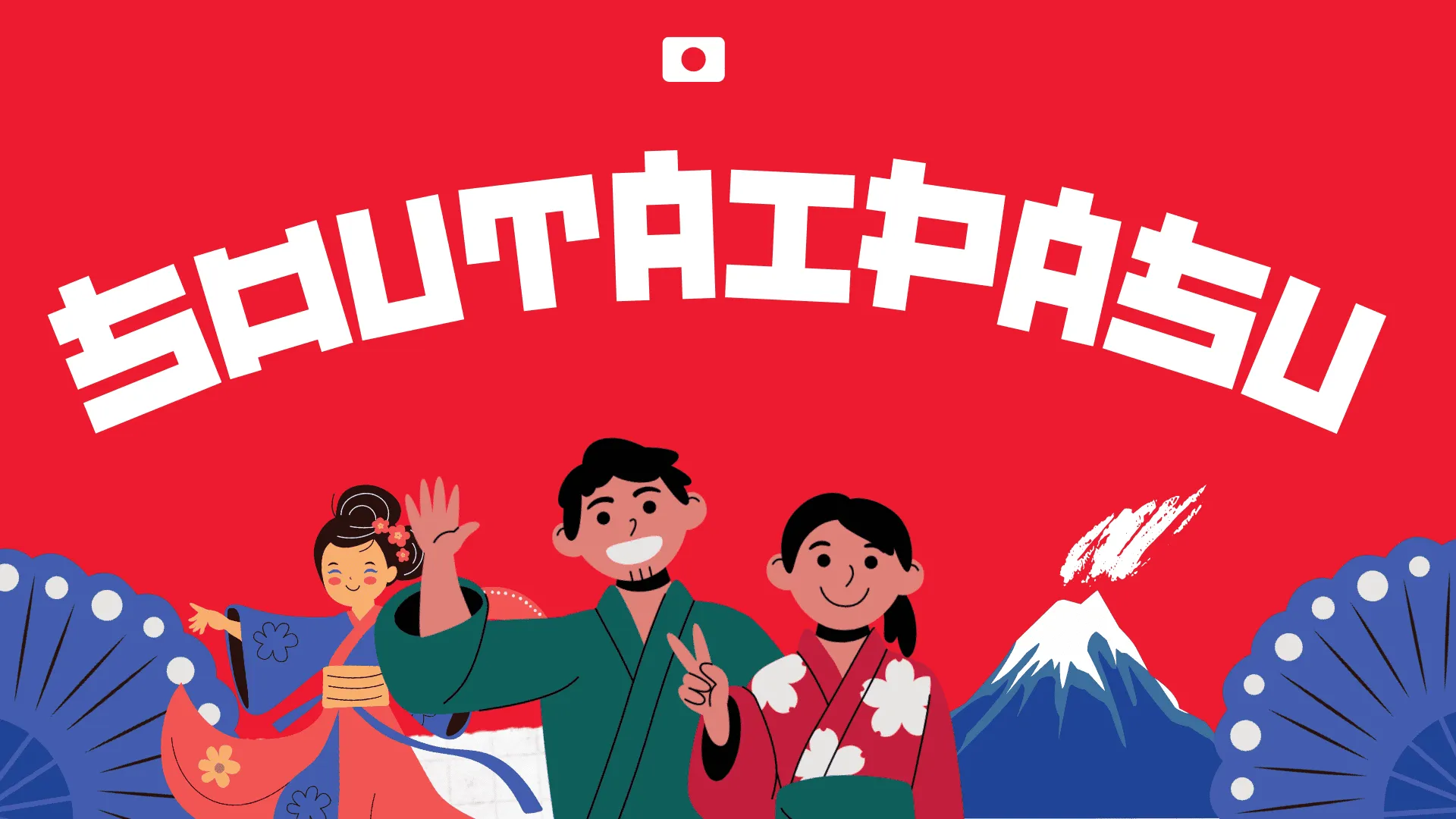Soutaipasu is a term that bridges the worlds of technology, language, and culture, with a core meaning rooted in computing and an evolving resonance across digital communities and creative discourse. At its most precise, soutaipasu (相対パス) is the Japanese term for “relative path”, a foundational concept in file system navigation and web development, but today it also functions metaphorically in online subcultures to express flexible relationships, contextual identity, and non-linear storytelling. This long-form guide unpacks soutaipasu from technical definition to cultural symbolism, with concrete examples and expert-friendly detail.
What Does Soutaipasu Mean?
Soutaipasu (相対パス) translates to “relative path” in Japanese computing terminology. In practice, a relative path locates a file or resource based on the current directory rather than starting from the root, which is known as an absolute path (絶対パス, zettaipasu). This distinction is central to how software projects are structured and deployed across environments, making soutaipasu indispensable for developers, web designers, and engineers.
Definition: 相対パス (soutaipasu) , “relative path.” Example: そうたいパス → soutaipasu → relative path.
Etymology and Components
- Soutai (相対): “relative; comparative”, a native Japanese term indicating relational positioning or comparison.
- Pasu (パス): a loanword from English “path,” written in katakana.
Together, 相対 (relative) + パス (path) concisely express a “relative path,” formalized in Japanese computing as soutaipasu.
Some informal web sources speculate alternative morpheme splits (e.g., 双 “pair,” 対 “opposing,” or “pass” from English), but the standard technical formation recognized in Japanese documentation is 相対 (relative) + パス (path). When discussing computing, that is the authoritative decomposition.
Technical Context: Relative vs. Absolute Paths
In software development, soutaipasu stands opposite zettaipasu (絶対パス, absolute path). A relative path is interpreted from the current working directory (CWD), while an absolute path specifies the complete route from the root directory.
- Relative path (相対パス): Flexible, portable, environment-agnostic references tied to current location.
- Absolute path (絶対パス): Fixed, root-based references useful for system-level consistency but less portable across environments.
This dichotomy is a staple across HTML, CSS, JavaScript, shell scripting, and version-controlled projects, making soutaipasu practical and ubiquitous in Japanese-language technical instruction.
Also Read – Asbestlint
Why Developers Prefer Soutaipasu in Many Workflows
- Portability: Projects move between machines, servers, and directories without breaking references when using relative paths.
- Maintainability: Teams avoid hardcoded root-specific locations, easing collaboration and deployment.
- Clarity in modular codebases: Components reference neighbors (e.g images/logo.png) in predictable ways.
Guides and explainers aimed at Japanese learners of programming consistently present soutaipasu as foundational for robust web and software architecture.
Practical Examples: Soutaipasu in Action
- HTML/CSS: Linking stylesheets or images using relative paths allows site directories to be moved without rewriting URLs.
- JavaScript modules: Importing modules from adjacent folders using keeps imports aligned with code structure.
- Shell/CLI: Navigating with cd and referencing scripts with relative paths enables reproducible local workflows across contributors.
These practices embody soutaipasu as a living, daily mechanic for developers in Japanese and global contexts alike.
Contrast Term: Zettaipasu (Absolute Path)
Absolute paths (絶対パス) begin at the root (e.g., / on Unix-like systems) and do not depend on the current location. They are sometimes preferable for system scripts, environment variables, or fixed assets where location consistency is critical. In pedagogy and documentation, soutaipasu and zettaipasu are taught together to emphasize appropriate use cases for each.
Dictionary and Terminology Confirmation
Japanese dictionaries and glossaries explicitly define 相対パス as soutaipasu, with the reading そうたいパス and the English gloss “relative path,” confirming the term’s canonical status in computing. This anchors discussions in authoritative lexicography rather than solely community usage.
Beyond Code: Soutaipasu as Cultural Metaphor
In recent years, soutaipasu has expanded from a purely technical term to a metaphor within Japanese digital culture, anime fandoms, and creative communities. The metaphor maps the logic of relative positioning to human relationships, identities, and narratives:
- Context-dependence: Just as a relative path is meaningful only in context, identity and choices gain meaning relative to surrounding conditions.
- Non-linearity and flexibility: Stories and relationships can “route” differently depending on starting points, mirroring how relative references can resolve to different targets across directories.
- Emotional proximity: Communities use soutaipasu to evoke closeness, alternate routes, or “not absolute” bonds in discourse around characters and arcs.
Analyses and essays highlight how this metaphor resonates with digital natives, framing soutaipasu as a vocabulary of perspective and interconnectivity.
Fandom and Creative Usage
Within anime, fanfiction, and fan-art ecosystems, soutaipasu is cited in commentaries as a tag or motif for alternative narratives, flexible pairings, or “what if” branches from canon. The logic is intuitive: if the “absolute” storyline is the zettaipasu, then soutaipasu signifies adjacent possibilities that make sense relative to a different starting point or framing.
Some fandom-oriented sites propose etymological reinterpretations (e.g., 双/対 + パス) to emphasize duality and remix culture; however, these are creative reframings rather than the standard computing derivation of 相対 + パス. They reflect the community’s desire to imbue the term with narrative elasticity and symbolic depth.
Why Soutaipasu Captivates Digital Culture
- It encodes perspective: Meaning shifts with position, a concept increasingly relevant in networked identities and multi-platform storytelling.
- It bridges disciplines: A technical term becomes a cultural tool, uniting developers, creators, and fans through shared metaphors.
- It aligns with remix and AU culture: Alternate universes, branching timelines, and recontextualized arcs map neatly to the idea of relative routing.
Longform essays discuss this evolution from code to culture, arguing that soutaipasu articulates a uniquely modern sensibility of context-aware navigation, both digital and human.
Common Pitfalls and Best Practices
- Overusing absolute paths can create brittle deployments; prefer soutaipasu for assets within the project tree to improve portability.
- Avoid ambiguous relative hops by refactoring structure or using aliases where appropriate in build systems.
- Document base directories and conventions in team READMEs so that soutaipasu remains predictable across contributors.
These practices reflect what Japanese-language technical curricula promote regarding clean architecture and collaborative resilience.
Also Read – Dowsstrike2045 Python
Historical and Adoption Notes
Sources note that soutaipasu entered mainstream Japanese computing vocabulary during the localization and growth of software development in the 1980s–1990s, when English technical terms were adapted to Japanese usage by combining native kanji with katakana loanwords. This hybridization made technical education intuitive for Japanese programmers and standardized soutaipasu across docs and courses.
Comparisons and Conceptual Models
- Map analogy: An absolute address lists full coordinates from a universal origin; a relative direction assumes a current location, much like soutaipasu.
- Narrative analogy: Canon is an absolute route; alternate readings or AUs are relative to a chosen moment or POV, soutaipasu as narrative pathing.
These models illuminate why the term migrated naturally from code to culture, its logic is portable and expressive across domains.
Advanced Notes: Path Resolution and Build Systems
Modern toolchains allow hybrid strategies that preserve the spirit of soutaipasu while simplifying maintenance:
- Module resolvers and aliases reduce deep relative traversals, while still avoiding brittle absolute system paths.
- Static site generators and bundlers adjust relative asset paths at build time, preserving portability across deployment contexts.
These practices maintain the advantages of soutaipasu while addressing scaling in large codebases.
Cultural Resonance: Why Soutaipasu Endures
Soutaipasu encapsulates an idea increasingly central to contemporary life: meaning and direction are relative to one’s current position, context, and network. In code, this means flexible references; in culture, it suggests empathetic, perspective-driven narratives. Essays argue that this alignment between technical logic and social metaphor explains the term’s spread across blogs, explainers, and creative platforms.
Frequently Asked Questions
What is the exact Japanese term for “relative path”?
相対パス (soutaipasu), read そうたいパス, defined in dictionaries as “relative path.”
What is the opposite of soutaipasu?
絶対パス (zettaipasu), meaning absolute path, starting from the root directory.
Why do developers prefer soutaipasu in web projects?
It improves portability, reduces hardcoding, and eases collaboration and deployment across environments.
Is soutaipasu used outside programming?
Yes. Commentary and essays describe its metaphorical use in Japanese digital culture, anime, and fan communities to signal flexible, context-dependent narratives and relationships.
Is there an official dictionary entry?
Yes. Japanese dictionaries and glossaries list 相対パス with reading and English gloss “relative path,” confirming the term in standard usage.




